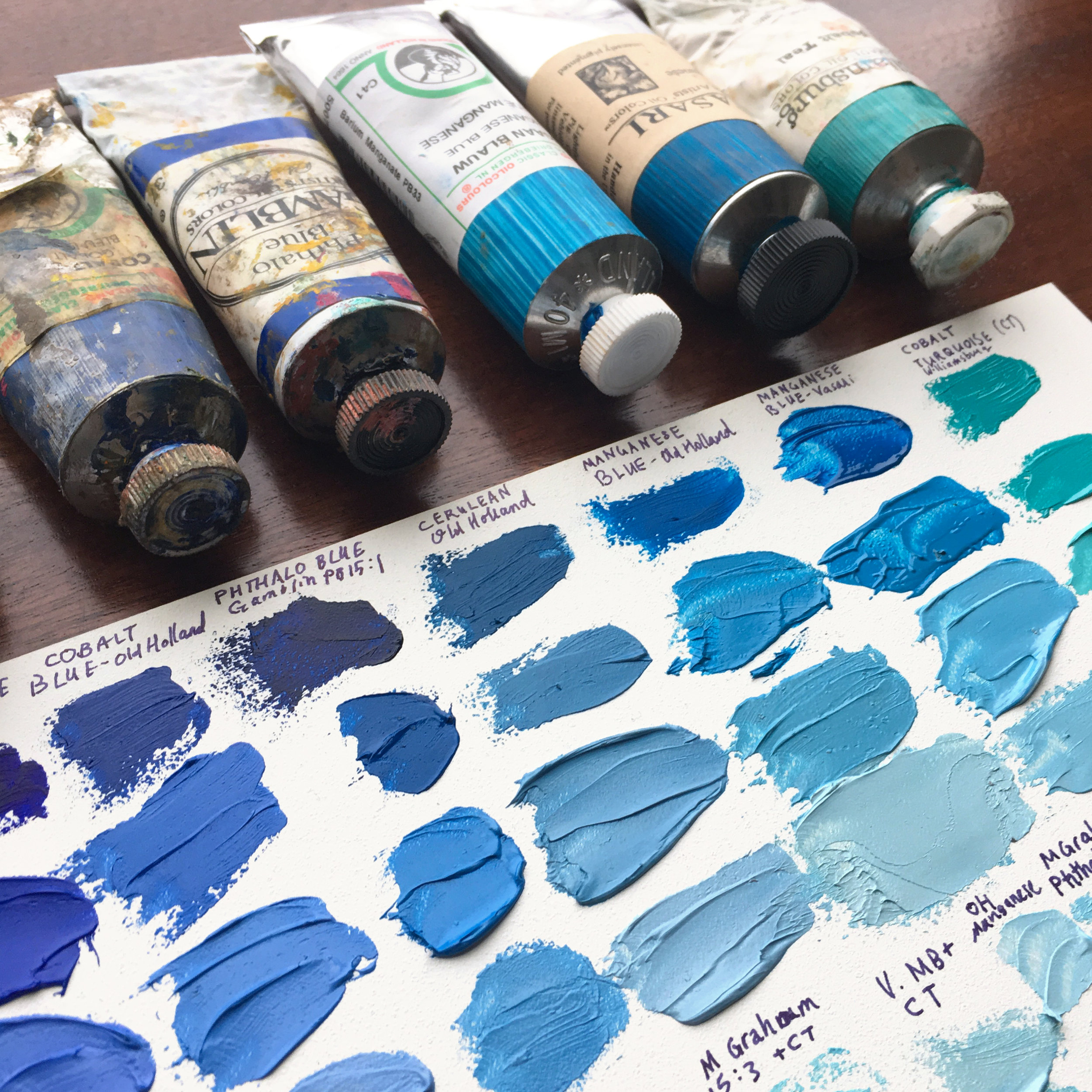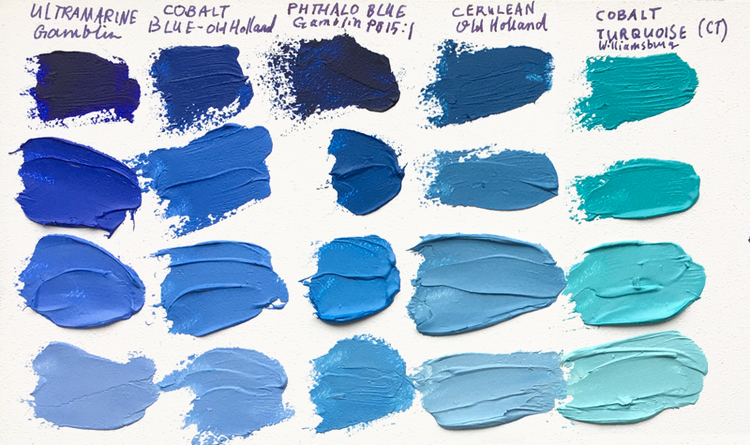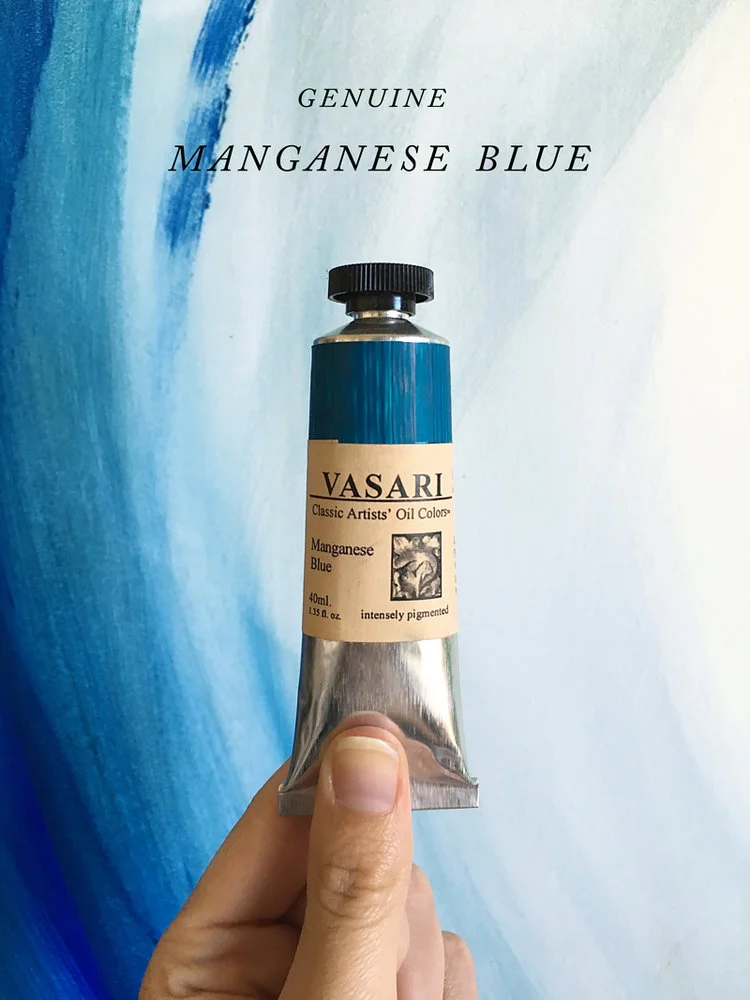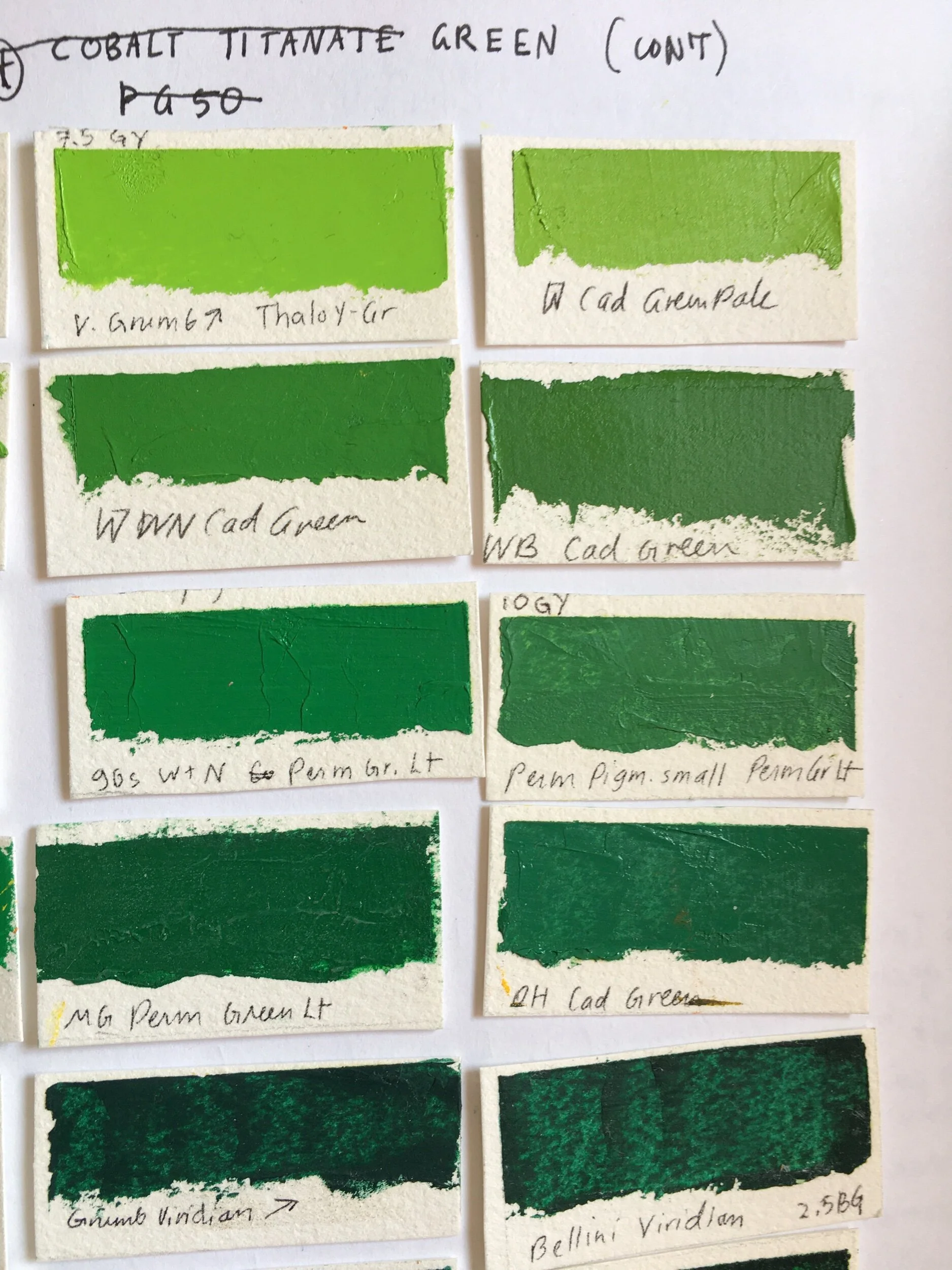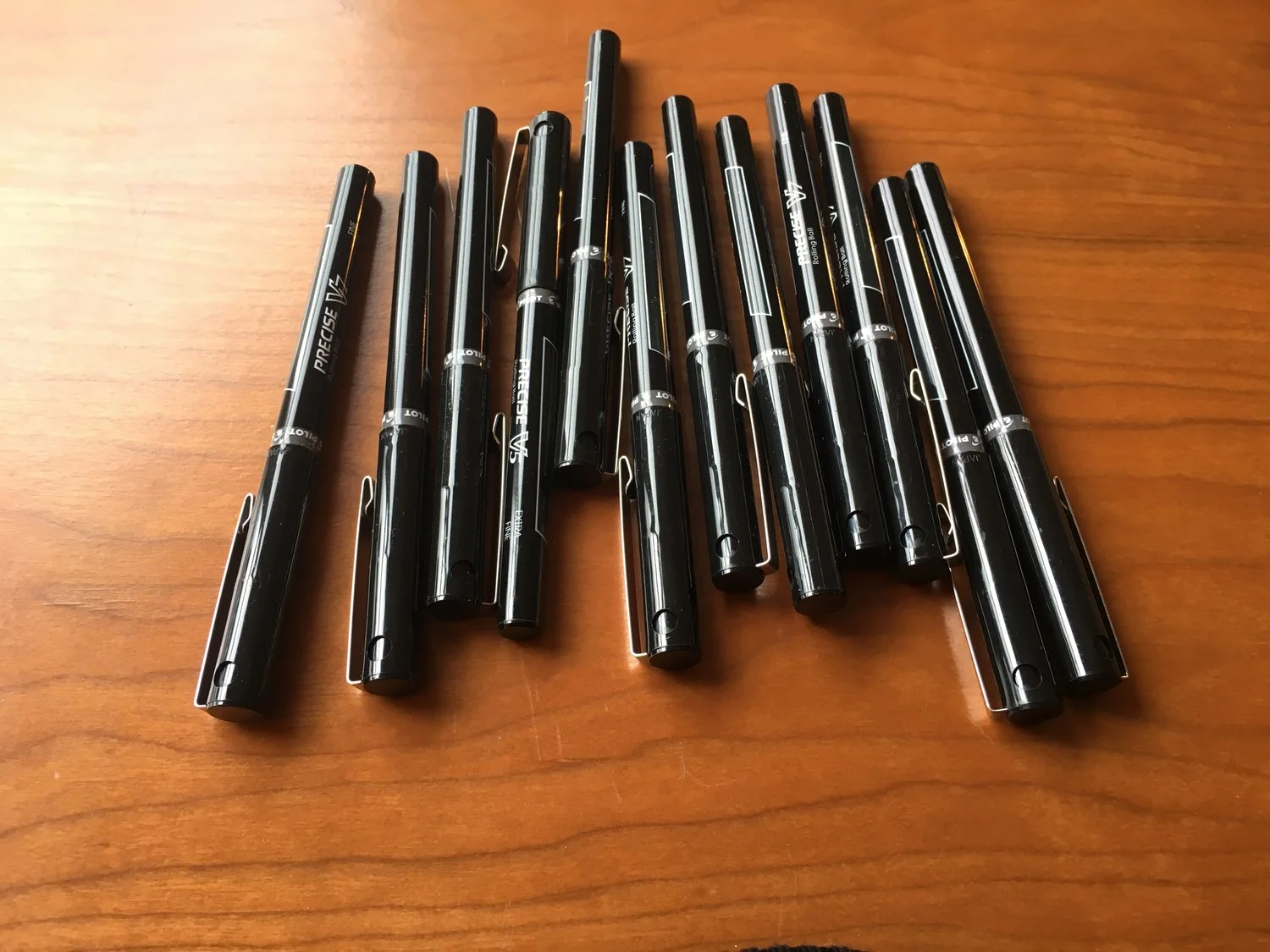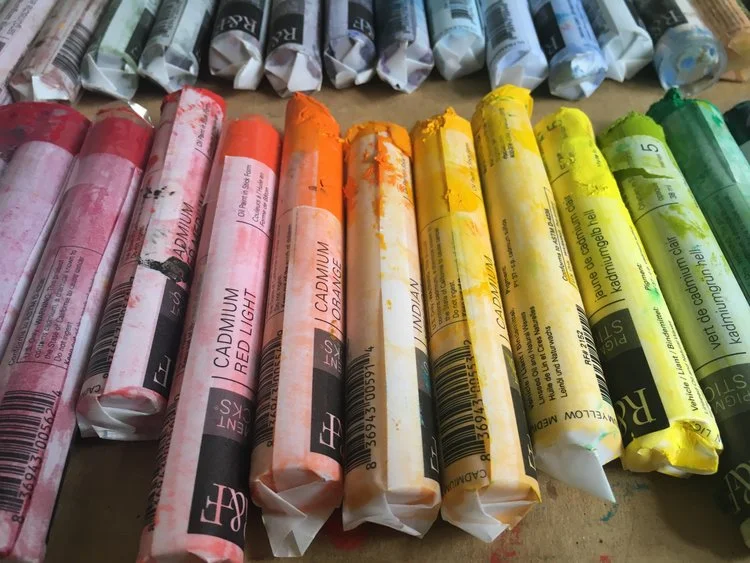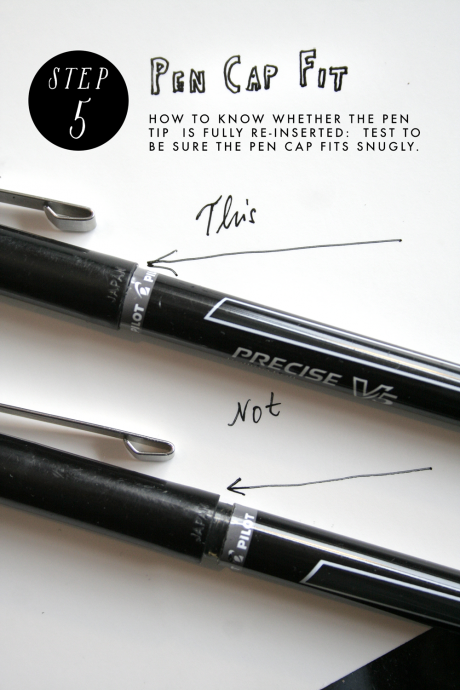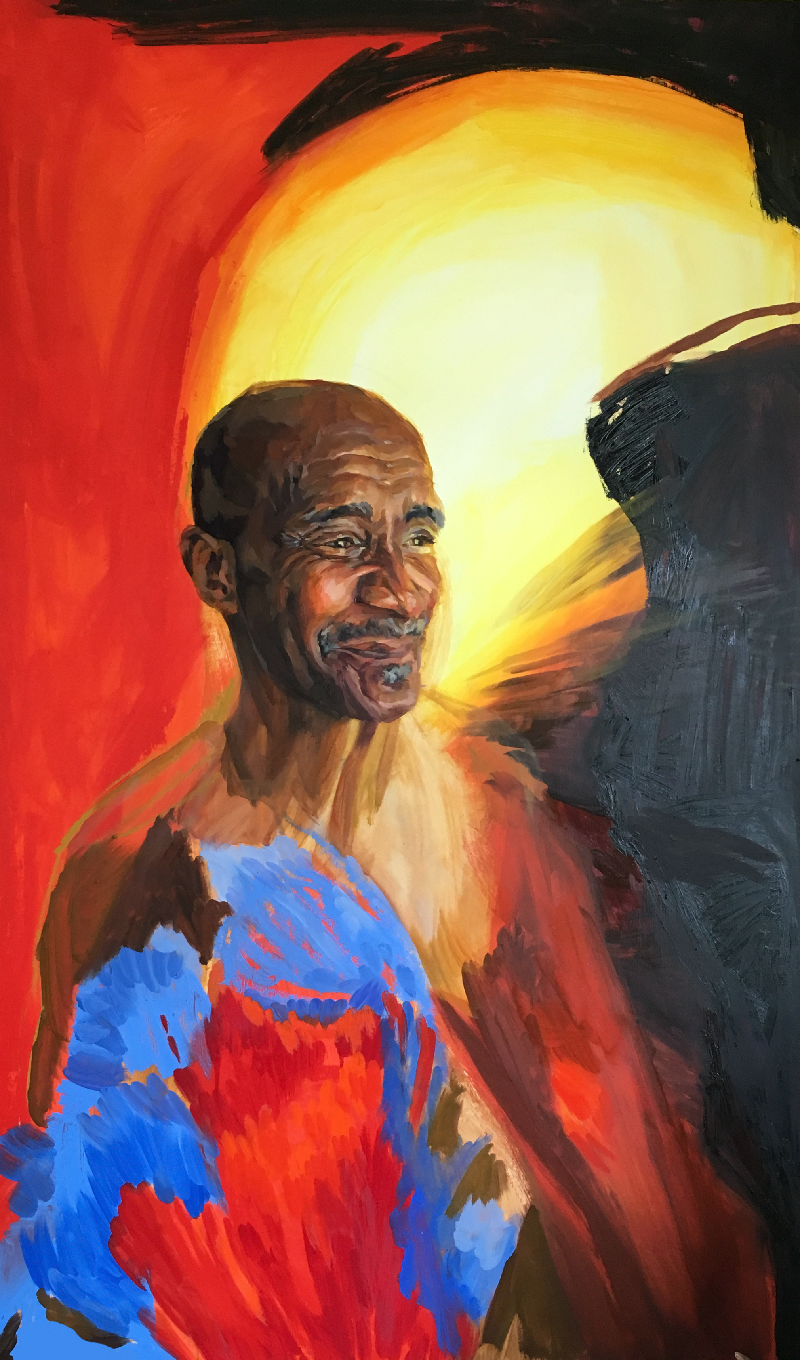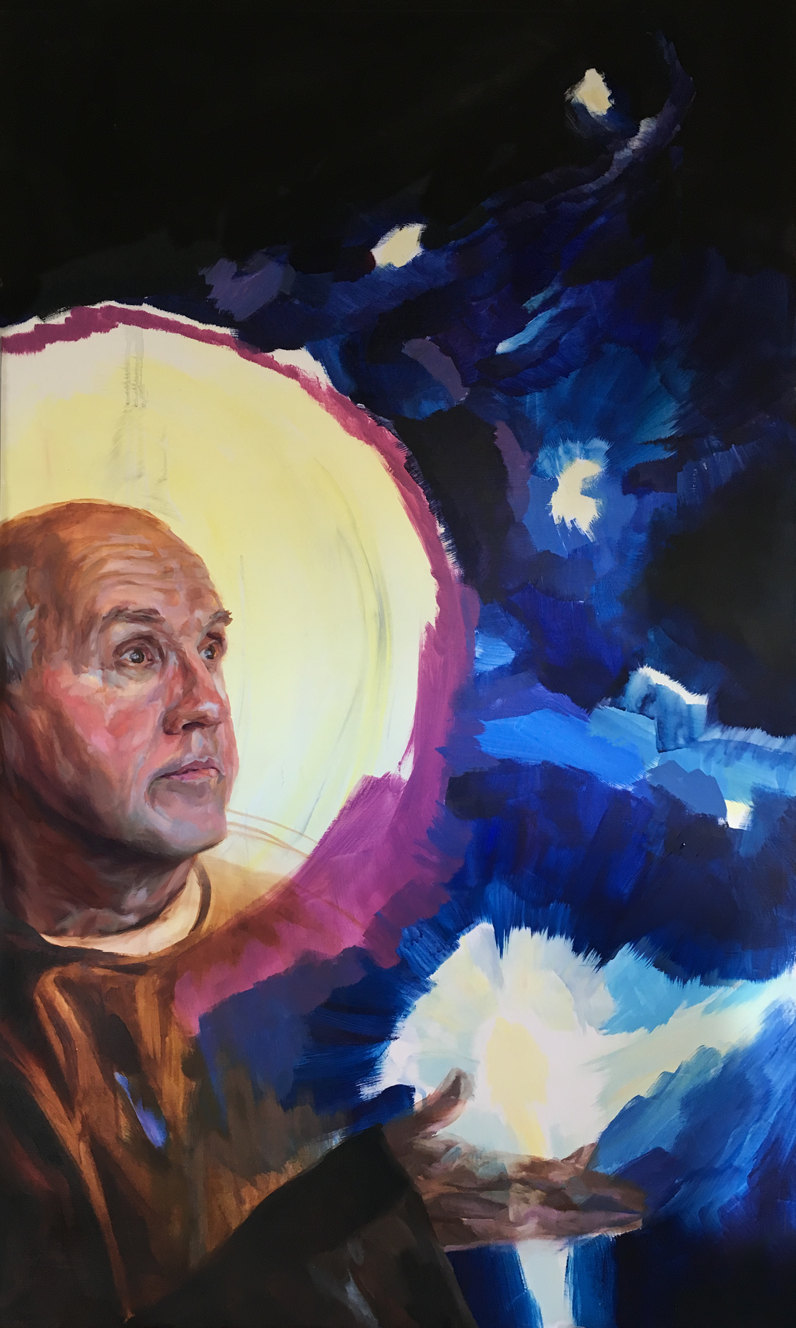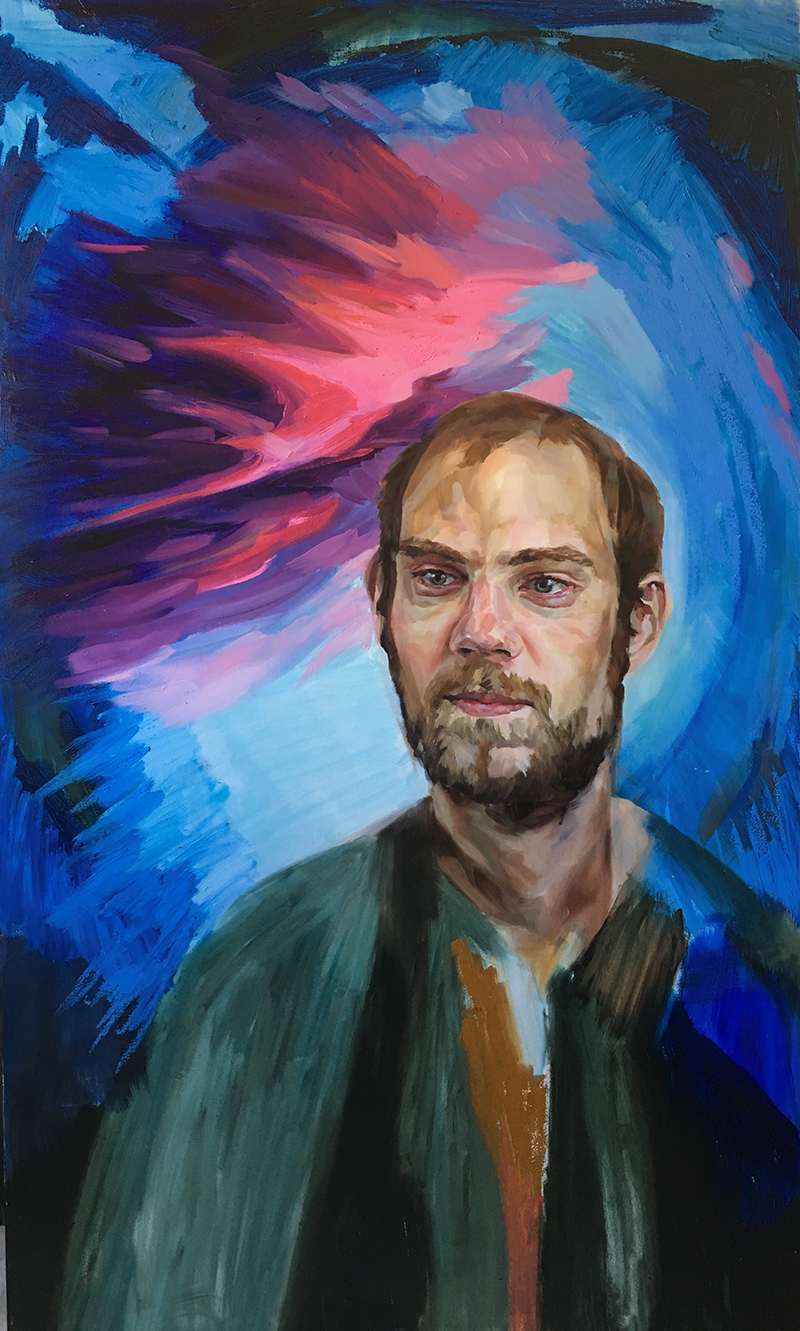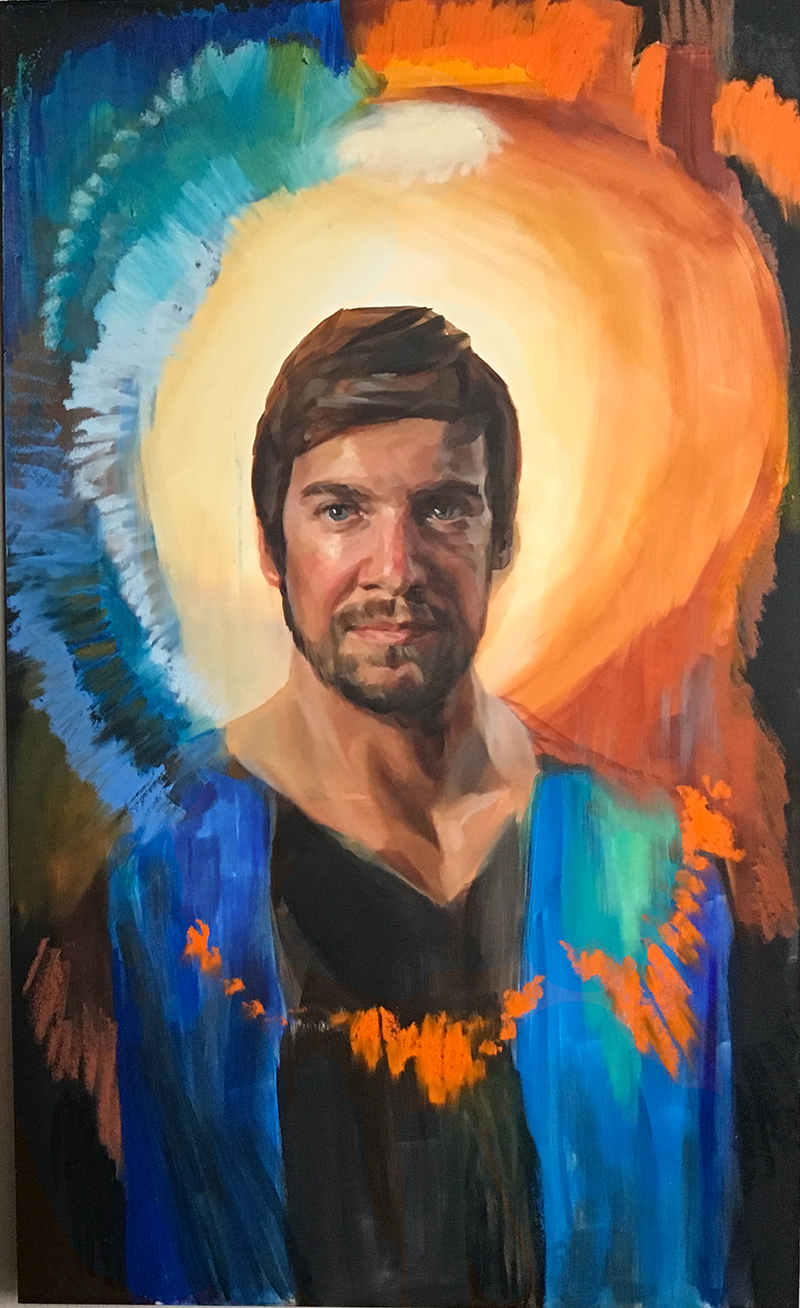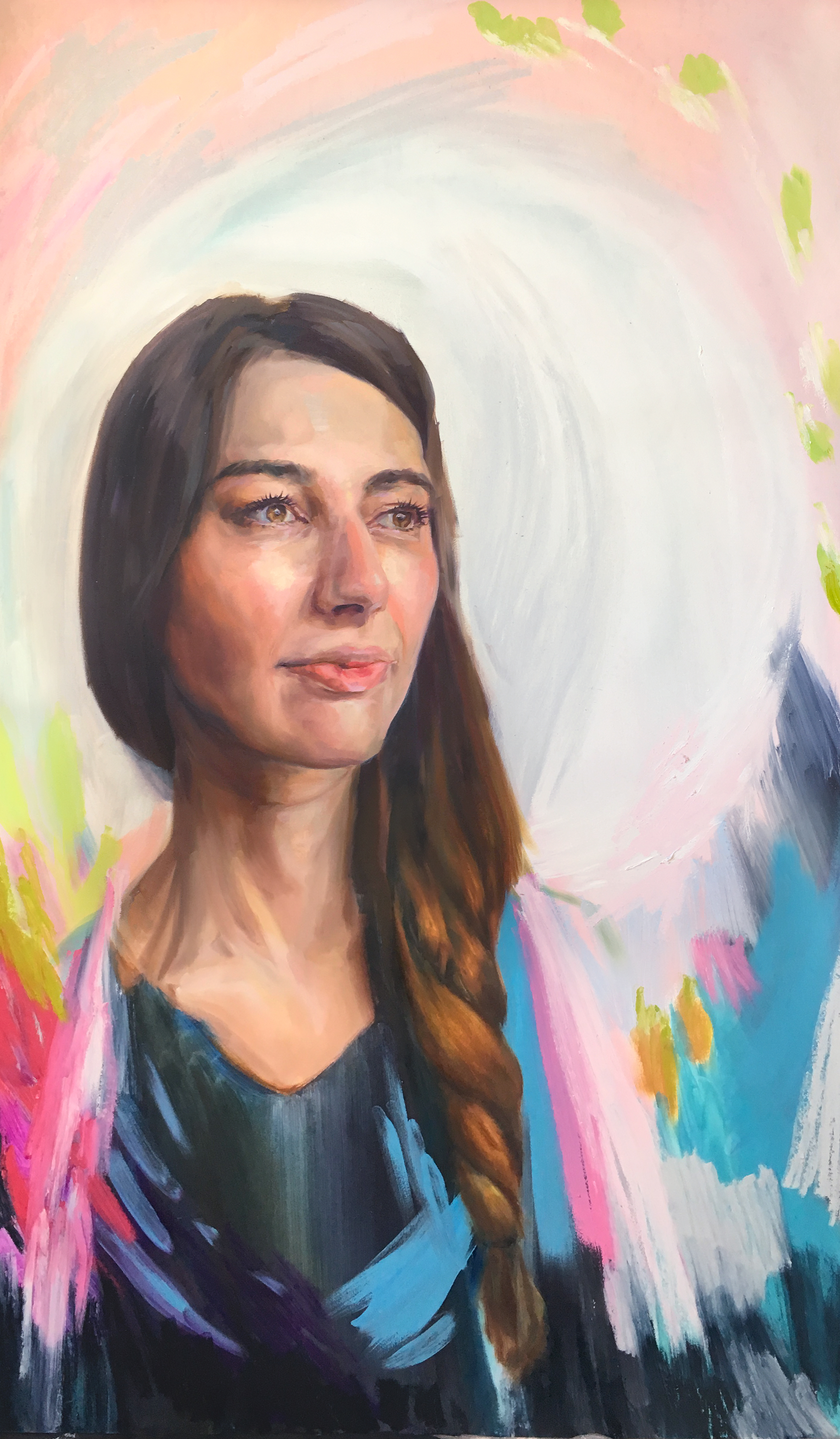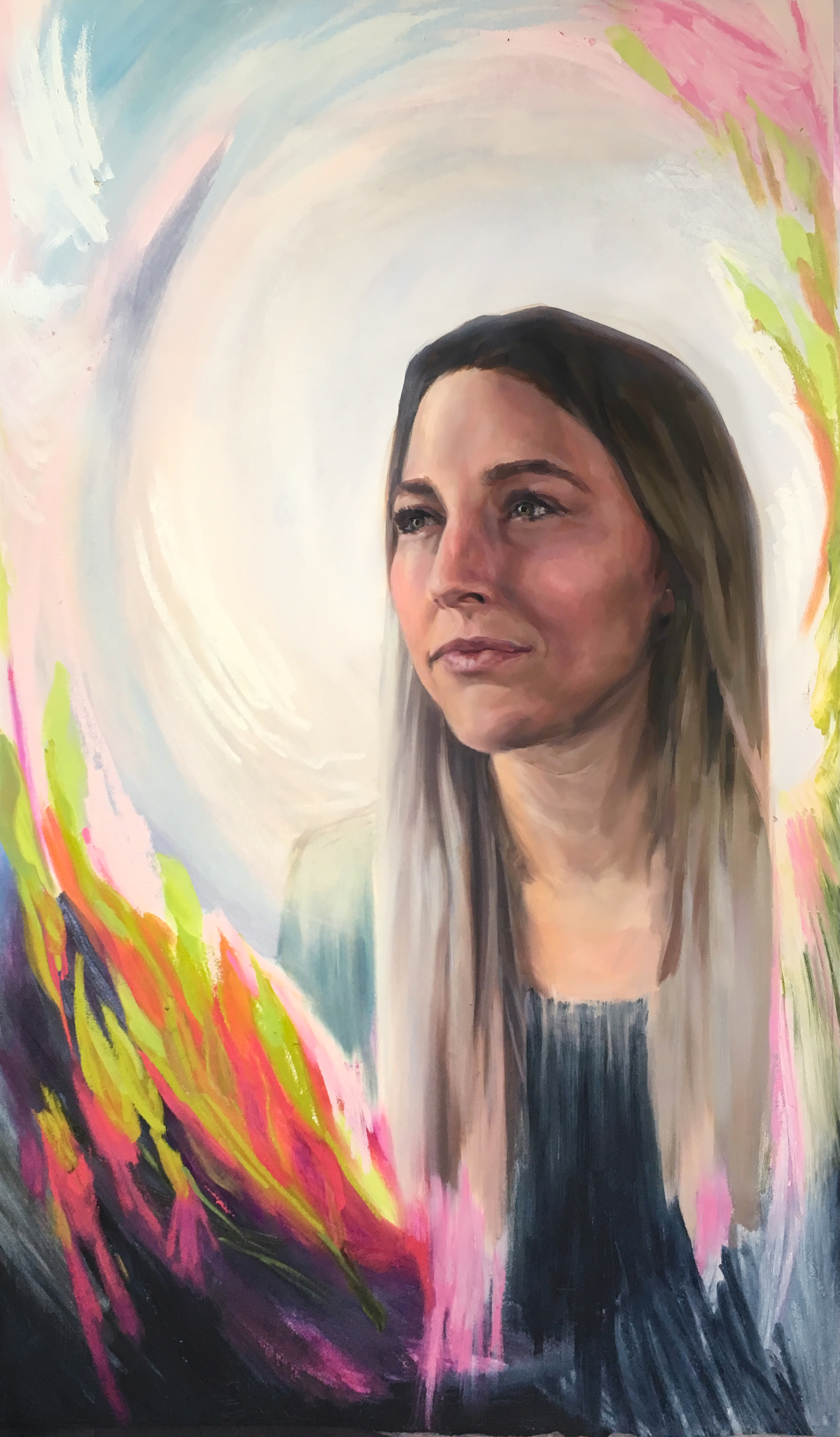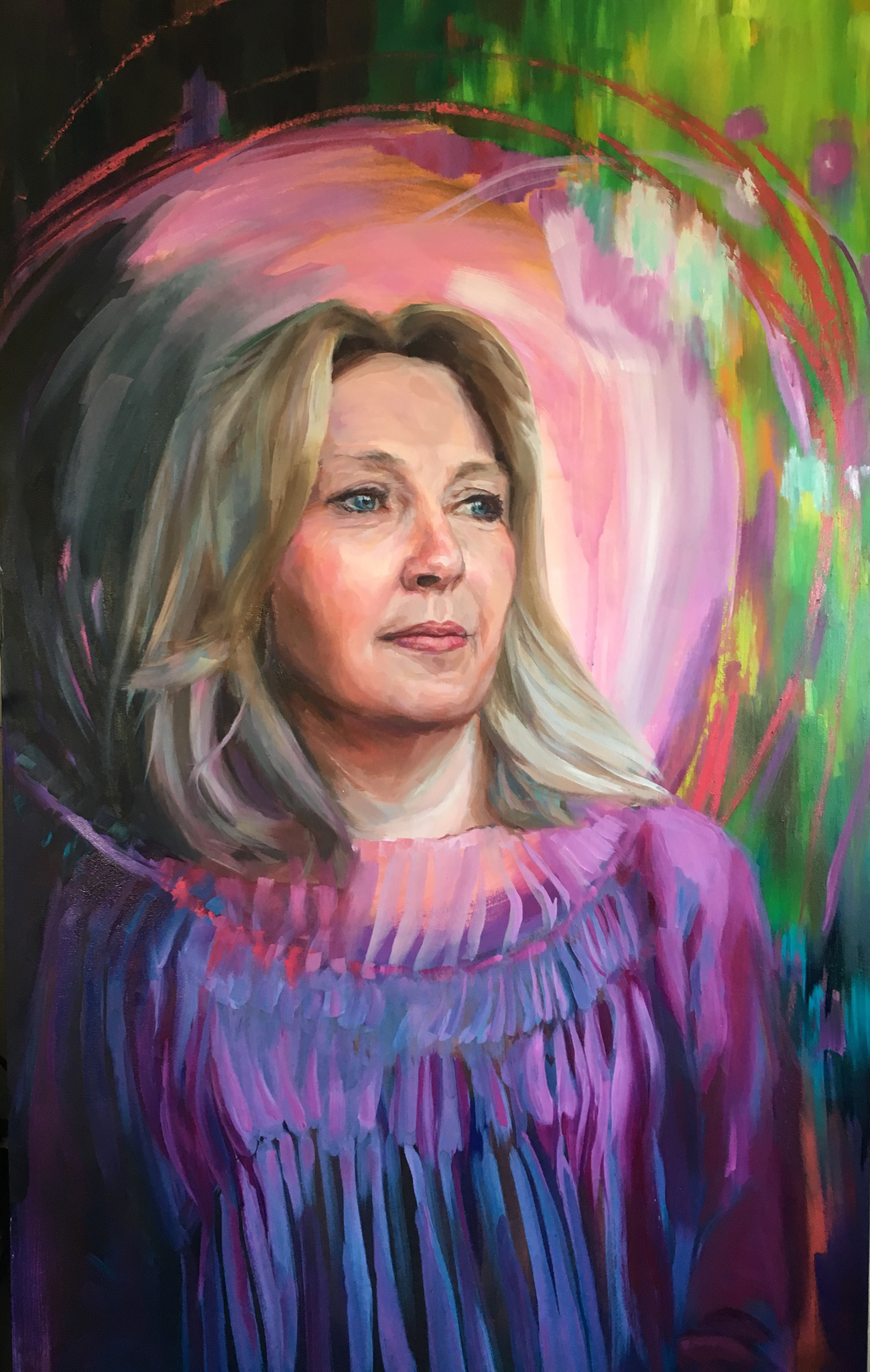In Search of the Lost Cyan: Manganese Blue
Blue. There may be lots of blues in your paintbox, but have you ever noticed that one is missing? The gradient of a blue sky isn’t quite the same without a bright blue cyan. Genuine Manganese blue, pictured above but unavailable today, was once a staple in artist’s paintboxes. This "extinct" pigment, can almost be replicated. You’ll soon know how to get as close as you can with a mixture, or how to find the real stuff… if you’re lucky.
This is part 1 of a 2-part post on why you might be interested in Manganese Blue Paint.
Check out Part 2: How to find Genuine Manganese Blue
Watercolorists: First, a quick caveat: this post is geared toward oil, acrylic, and gouache. In watercolor, the unique granulating properties of genuine Manganese Blue add a different set of effects than just the hue. However, there are some mixing recipes at the end that may also be of interest to watercolorists, even though these mixtures will not deal with the issue of granulation.
In Search of Cyan Paint
I was painting a brilliant blue sky when I realized that no blue in my paintbox made a really bright cyan. Cyan is bright, vibrant, and leans toward green. Cyan is easy enough to create in printing inks, so why not fine art pigments? I decided to take a trip to the local art store to inquire about this section of the color gamut. What they said confirmed my suspicions-- unless you’re working in watercolor or thinned down washes of oil paint, to make a great cyan takes some thoughtfulness. That day, I purchased Cobalt Turquoise (shown at the far right in the graphic) to help mix the color for which I had searched.
Missing Cyan. Above, a comparison of blue paints to show the pigments currently available to painters. From left to right: Ultramarine Blue, Cobalt Blue (Genuine), Phthalo Blue (PB 15:1), Cerulean Blue (Genuine), and Cobalt Turquoise (Genuine). None of the above single-pigment paints out of the tube is very close to a true cyan- an intense blue-green that is both high value (lightness) and high saturation. Other variations of Phthalo Blue (Green Shade) and Genuine Manganese, which is currently unavailable, are not shown here. The colors above are shown applied opaquely and mixed with increasing amounts of titanium white.
The Limitations of Blue Pigments In Opaque Painting Techniques
If you are interested in cutting to the chase and surveying your options for the blues available, feel free to skip ahead to the next paragraph. If you aren’t quite convinced about the lack of cyan pigments, what follows may illuminate the problem. It's important to note that the need for a better cyan is most noticeable when working with opaque paint handling techniques. I painted for years before noticing the need for a high-saturation cyan pigment besides a regular Phthalo blue, and it wasn't until I worked on commission in gouache that I began to realize the gap existed.
As an opaque paint, gouache presents its own set of benefits and limitations, and in other media (oil, acrylic, or watercolor) the lack of a single pigment cyan is not so dearly missed. The standard greenish blue in any media is either a Phthalo Blue, which is certainly capable of cyan tones when used in a transparent way or Genuine Cerulean Blue, which has a cyan look but is often not very saturated.
As a closer match to cyan, let's look at Phthalo. When it's undiluted, Phthalo blue looks almost black, and a person must either thin it down (to create transparency) or add white in order to mix something like a light cyan. In direct gouache painting, the best option is to mix Phthalo with white, which makes the blue less saturated. So, all of this leads us to a quandary: in order to get Phthalo to closer to cyan, at least in gouache, a person has to add copious amounts of white. This makes the blue duller, less saturated, and less leaning toward green. In short, you can get pale blue, but not a good cyan.
A Brief Review of the Blues in the Paintbox
Following the graphic below, let's talk through the options.
The Full Gamut of Blue Pigments, Including Genuine Manganese Blue. Above, you can see that two different brands of Genuine Manganese Blue are compared, and both yielded a closer match to cyan than the other blues.
From Left to right:
Ultramarine Blue: As a cyan mixing color, Ultramarine is out of the question, as it is a royal blue that leans more toward purple. This is known as pigment PB 29.
Cobalt Blue (Genuine): Genuine Cobalt does not lean as far towards purple as Ultramarine, but it is unlikely to make a convincing cyan. Adding yellow to Cobalt blue in hopes of mixing a cyan “green-blue" make the resulting mix duller. This is pigment PB 28.
Phthalo Blue, short for Phthalocyanine Blue: This is the go-to blue for approximating cyan. The usefulness of this blue in a quest for cyan depends on which variety you have. In general, cyan tones can best be done using transparency, which is not really a feature of opaque painting methods. Since this color comes out of the tube almost as dark as a black, in opaque media, one must mix it with white to reveal it's "true blue" tone. At a certain point, this results in a duller, less saturated, bright baby blue. It takes a lot of white to raise tube Phthalo to a light cyan and often destroys some of the vibrant blue-green chroma. The resulting mix can turn into a chalky pale color. If you’re hoping to “green it up” with the addition of yellow (mixture not pictured here) it may dull the chroma too much too achieve a bright cyan. Here’s the answer: the best bet is the combination of a certain kind of Phthalo Blue with a particular Phthalo Green. Ultimately phthalo blue is the best bet for mixing cyan. I recommend Winsor and Newton’s Phthalo Blue (Greenish) PB 15 or most any other Pthalo Paint marked PB 15:3 (if this is confusing, see the section below which contains a fuller explanation). Mixing PB 15:3 with a specific Phthalo Green, labeled PG 7, and a touch of white is the best bet (see below).
Cerulean Blue (Genuine): As a pigment, genuine cerulean is a little “dustier" in its coloration than cyan. It won't get any brighter in chroma than it comes out of the tube, and mixing it with white or yellow will further dilute the blue-green hue that it possesses. True Cerulean is pigment PB 35.
Enter... Manganese Blue (Genuine): First, to clarify, many companies sell “Manganese Blue Hue” and that is not the same thing. Genuine Manganese Blue, no longer manufactured, is a clear, bright, and punchy blue that leans toward green. If you’re working in opaque media, this property can be useful. If you look at the third row, note how much more "blue-green" the Manganese Blues are out of the tube compared with the standard Phthalo or the Genuine Cerulean. Two brands of Manganese Blue Genuine are shown here: Old Holland and Vasari. You'll know Genuine Manganese Blue since it is labeled as PB 33.
Cobalt Turquoise or Cobalt Teal (Genuine): The last in line is, in truth, categorized as a green, but a green that leans far enough in hue toward blue that it can be helpful. Cobalt Turquoise mixed with a green-leaning Phthalo (like PB15:3 or Winsor and Newton’s Phthalo Blue Greenish) is a good way to get close to cyan. This is a good tactic to have as an option if a mix is getting too chalky by simply adding white. Cobalt Turquoise should not contain white, and is naturally a paler pigment.
The Secret Manganese Recipe
Let’s explore the answer that your soul has been longing for, which is, what’s a person to do if they can’t find Genuine Manganese Blue, but are dying to paint those cyan skies?
As mentioned previously, the type of Phthalo blue you’re using matters. Phthalos differ from brand to brand. There one particular formulation of Phthalo that generally yields good results, but you’re going to have to hunt for it and do some label reading. As I mentioned earlier, PB 15:3 comes very close in hue, and if you can find it, Phthalos marked PB16 or PB17 also get close to cyan right out of the tube. Oddly enough Winsor and Newton’s Phthalo Blue (Greenish), which is marked as PB 15, is one of the best and most readily available.
An Easy Recipe for Mixing Cyan:
The right Phthalo: try paints marked PB 15:3 or Winsor and Newton’s Phthalo Blue (Greenish) + A particular Phthalo Green (any single pigment paint marked PG 7) + the white paint of your choice.
This won’t have quite the transparency of Manganese blue, but it will help to hit some of those tricky cyan high notes.
If you are working in a medium like gouache, Phthalo Blue plus Cobalt Teal Greenish might be a better solution. I would recommend experimenting with both recipes.
There are also some manganese blue hues and substitutes on the market. I’d love to hear if these have worked for you.
In the next post, we’ll also discuss how to to find genuine Manganese Blue for yourself.
Have you missed the cyan paint in your paintbox, or found a good replacement? Please share your experiences in the comments below.
